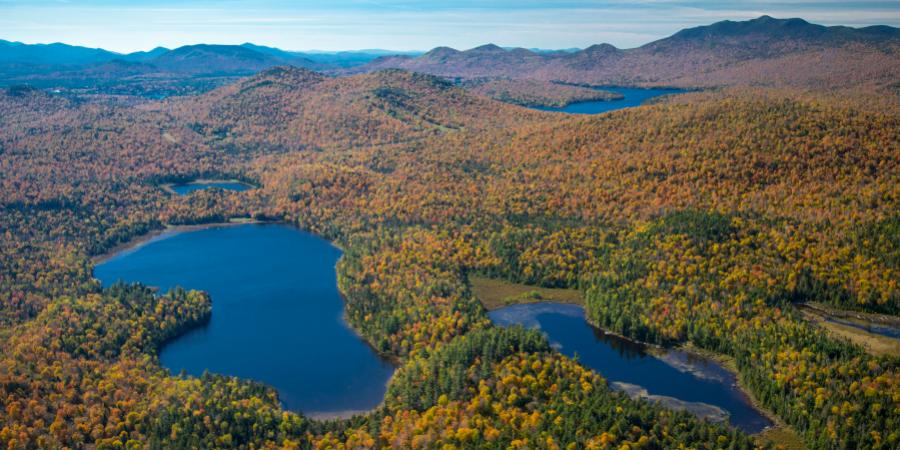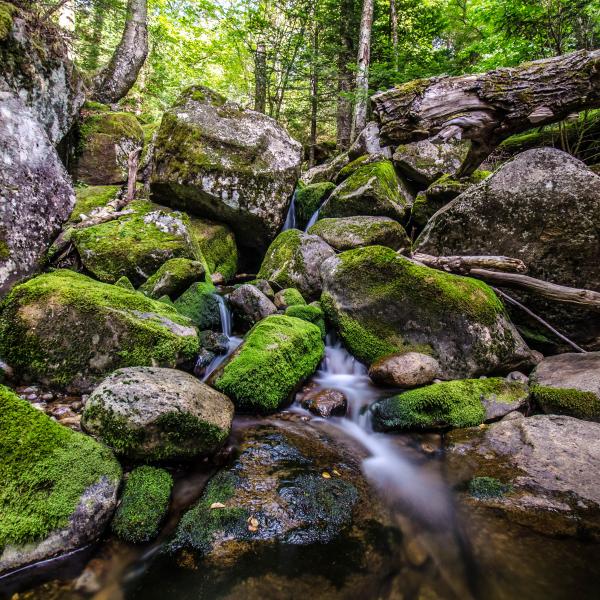Climate change is having a variety of impacts on lakes across the world. This article is the first part in a series that will explore the various ways lakes are altered by climate change and what that means for the lakes we all know and love.
Changes in lake ice cover and water temperature are the most obvious effects of a warming climate. The 2007 Intergovernmental Panel on Climate Change report documented a global reduction in lake and river ice cover of 12.3 days on average over the last century. In the Adirondacks, the changes are even greater. Mirror Lake has experienced a 24-day reduction in cover from 1903 to 2019, and similar trends are occurring in other Adirondack lakes. Changes in the ice cover of Lake Champlain are perhaps the most dramatic. In the 19th century, the lake didn't completely freeze only three times, but it failed to freeze 18 times between 1970 and 2007.
One of the most considerable effects that a reduction in ice cover has on a lake is altering the amount of light available within the water column. Ice and snow substantially reduce the amount of available light. Typically, primary production, i.e., algal and aquatic plant growth, declines considerably during the winter due to a decline in light availability. In arctic lakes that were historically perenially ice-covered, the loss of ice cover during the summer has dramatically shifted the ecology of these lakes. They have transitioned from very low productivity lakes to lakes that have diverse plankton communities. Similar, but more subtle, shifts are occurring in temperate lakes that are seasonally ice-covered.
Alterations in ice cover are also influencing the pattern, strength, and timing of thermal stratification. When lake ice goes out, lakes go through a period of mixing or turnover. Once the surface water warms a few degrees, the lake begins to stratify – warm on top, cold on the bottom. In some cases, reducing ice cover can prolong the length of time lakes are stratified, while in other instances, it can extend spring and fall mixing.
Prolonged periods of stratification often result in declines in dissolved oxygen in the deepwater of the lake. Drops in oxygen occur because the water at the bottom of thermally stratified lakes becomes trapped due to temperature-driven density differences. The longer the lake remains stratified, the longer the water is trapped at the bottom, and the greater the loss of oxygen. The deep cold waters of lakes offer thermal refuge for coldwater fish such as lake trout. Declines in oxygen due to prolonged stratification are one of the primary threats to this iconic Adirondack fish.
Extended periods of spring and fall turnover can result in warmer lake bottom waters and alterations in nutrient cycling. Prolonged spring mixing can result in more heat being transferred to the deep bottom waters of a lake, increasing its temperature. Warmer temperatures may increase the rate of decomposition, leading to further declines in oxygen. Prolonged mixing can also increase nutrient availability at the surface, resulting in greater primary production.
Finally, shifts in ice out can result in phenological mismatches between phytoplankton and zooplankton. Phenology is the study of cyclical or seasonal natural phenomenon. Organisms that respond to changes in temperature may emerge earlier due to earlier ice off, while organisms that react mostly to length of daylight will emerge at their usual time. Many phytoplankton emerge in response to temperature and light, while many zooplankton emerge in response to photoperiod. This can result in phytoplankton appearing well before zooplankton, creating an increase in phytoplankton growth due to a lack of grazing from zooplankton. For millennia, these organisms evolved to time their emergence so that environmental conditions were just right for their growth and reproduction. Rapid shifts in what has otherwise been consistent patterns in the environment are throwing off their timing; for some, this is boom, and for others, a bust.
All of these factors combined mean that are lakes are different today than they were several decades ago, and they will continue to change in response to a variety of factors including a warming climate. Every lake is different, but we can expect to see changes in water clarity, color, algal biomass, fish communities, and aquatic plant growth. Local and global strategies to reduce greenhouse gas emissions are critical to the long-term health of our lakes.
Sign-up for our e-newsletter to get weekly updates on the latest stories from the Ausable River Association.
- IPCC 2007. Fourth Assessment Report (AR4).
- Beier et al. 2012. Local climatic drivers of changes in phenology at a boreal-temperate ecotone in eastern North America.
- Stager JC & Thill M. 2010. Climate Change in the Champlain Basin: What natural resource managers can expect and do.
- Smol et al. 2005. Climate-drive regime shifts in the biological communities of arctic lakes.
- Guzzo & Blanchfield. 2016. Climate change alters the quality and phenology of habitat for lake trout (Salvelinus namaycush) in small Boreal Shield lakes.
- Wiltse et al. 2016. Seasonal and decadal patterns in Discostella (Bacillariophyceae) species from bi-weekly records of two boreal lakes (Experimental Lakes Area, Ontario, Canada)
- Winder & Schindler. 2004. Climate change uncouples trophic interactions in an aquatic ecosystem.



